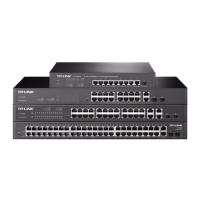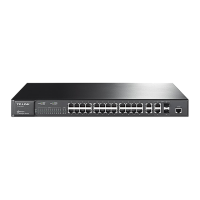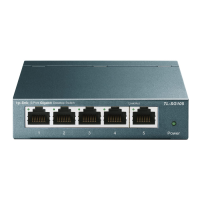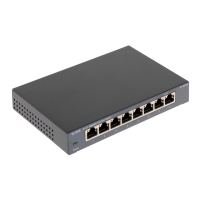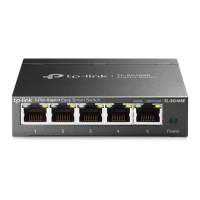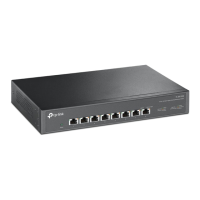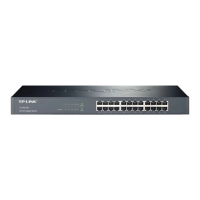Choose the
menu XNCP→Rtkxcvg"XNCP→RXNCP Eqphki to load the following page.
Figure 6-16 Create Private VLAN
The following entries are displayed on this screen:
" Etgcvg"Rtkxcvg"XNCP"
Rtkoct{"XNCP<"
Enter the ID number of the Primary VLAN.
Ugeqpfct{"XNCP<
Enter the ID number of the Secondary VLAN.
" Ugctej"Qrvkqp"
Ugctej"Qrvkqp<"
Select a Search Option from the pull-down list and click the Ugctej"
button to find your desired entry in Private VLAN.
Rtkoct{" XNCP" KF<" Enter the Primary VLAN ID number of the
desired Private VLAN.
Ugeqpfct{"X NCP"KF<"Enter the Secondary VLAN ID number of
the desired Private VLAN.
" Rtkxcvg"XNCP"Vcdng"
Ugngev<"
Select the entry to delete. It is multi-optional.
Rtkoct{"XNCP<"
Displays the Primary VLAN ID number of the Private VLAN.
Ugeqpfct{"XNCP<
Displays the Secondary VLAN ID number of the Private VLAN.
Rqtv<"
Displays the Port number of the Private VLAN.
80:04"Rqtv"Eqphki"
The Private VLAN provides two Port Types for the ports, Promiscuous and Host. Usually, the
Promiscuous port is used to connect to uplink devices while the Host port is used to connect to the
he terminal hosts, such as PC and Server.
83
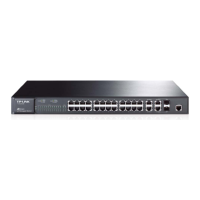
